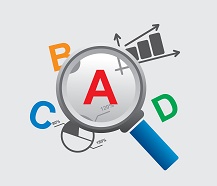Even though the end-users are always looking for easy-to-use solutions for their day-to-day tasks, not always a new solution which is easier than the older is readily accepted.
System Transition requires behavioral change as well which isn't always acceptable to some
The reason is “the new system might require them to
change the way they work”. And as they require ease (as I mentioned in the
key lessons I learned while managing a transformation program as Change Manager), sometime they are not willing to spend time to understand that the new solution is easier than the one they are using currently.
Sometime availability of an alternative is the cause of no or slow adoption of new situation / solution

If the old system is still available while the new has been deployed, chances are quite high that some of the end-users will continue using the previous system just because they are used to doing their business the old way. The old solution can’t be decommissioned until approved by management (business & IT together). So even if you have run through the full
training cycle and have ensured relevant people have learned the new process, until the old solution is completely stopped there are chances of having slow solution adoption.
IT Organization has its own role, even in presence of dedicated Change Management function
 To ensure they switch to & adopt the new solution, in addition to various Change Management activities which need to be planned and the procedure which need to be followed, the IT Organization (the SAP CoE) has to play a key role i.e. in addition to convincing the relevant stakeholders of the value the new solution could generate and the process excellence it could bring, it has to ensure the decision makers understand that switching to new solution won't have any impact on business continuity and hence old system could be stopped.
What do you think?
To ensure they switch to & adopt the new solution, in addition to various Change Management activities which need to be planned and the procedure which need to be followed, the IT Organization (the SAP CoE) has to play a key role i.e. in addition to convincing the relevant stakeholders of the value the new solution could generate and the process excellence it could bring, it has to ensure the decision makers understand that switching to new solution won't have any impact on business continuity and hence old system could be stopped.
What do you think?
Do you have similar experience to share?
